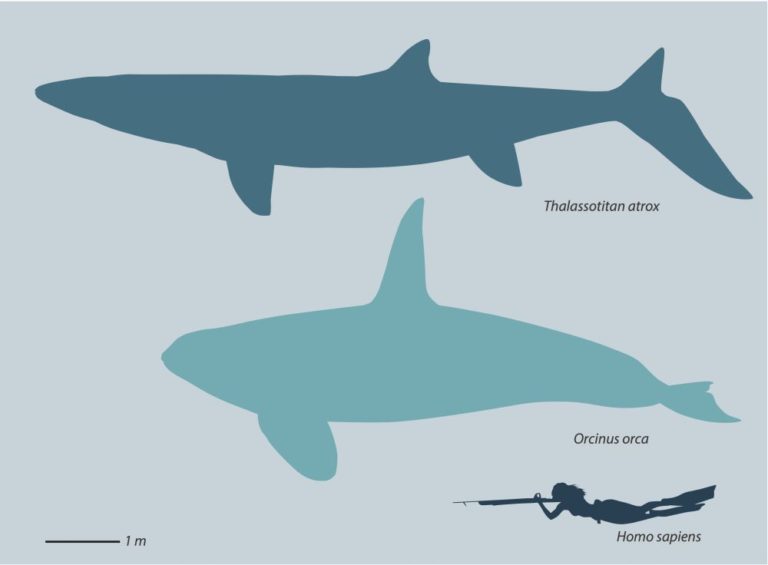Incredible bones of a large marine lizard have been discovered, providing insight into the dominance of this extinct creature 66 million years ago. The creature is a newly found genus of mosasaur, huge marine reptiles that roamed the seas during the Late Cretaceous and preyed on marine life. The attrition on its teeth and other bones discovered at its dig site indicate that this imposing creature, known as Thalassotitan atrox, was no big softie, but rather fed mostly on sea turtles, and other mosasaurs.
This suggests that Thalassotitan was a top predator that helped keep ecosystems stable by limiting the impact of other predators. Mosasaurs were the largest known reptiles, reaching lengths of 12 meters (40 feet) and being twice as massive as the largest crocodilians of today. In contrast, mosasaurs are more distantly linked to living snakes and iguanas. The marine iguanas of the Galapagos Islands are excellent swimmers, but the mosasaurs were even more at home in the water. A reptile head, shark-like fins on their tail, and flippers for feet made up for it.
Given their varied dental structures, distinct species of mosasaur might have specialized on particular foods. Some of the teeth were sharp and small, ideal for catching fish and squid, while others were broader and flatter, making them well-suited for crushing shells. It’s more likely that these creatures were predators than scavengers, considering that they don’t appear to have a strong sense of smell.
Specimen analysis suggests that mosasaurs dined on a wide variety of prey, including other mosasaurs, fish, cephalopods, turtles, mollusks, and even birds. It appears that Thalassotitan was one of the fiercest. Phosphate fossil beds in Morocco, a country known for its abundance of well-preserved Cretaceous and Miocene fossils, are where the specimens were found.
Skulls, backbones, leg bones, and finger bones are among the bones found. In combination, they allowed for a thorough analysis of Thalassotitan’s skeleton, shoulders, and forelimbs, as well as his head, jaw, and teeth. According to Longrich and his colleagues, the species might reach a length of 9 to 10 meters as an adult. This would make it somewhat longer than an orca. Nonetheless, at roughly 1.5 meters in length, its cranium was nearly twice as long as an orca’s.













Leave a Reply